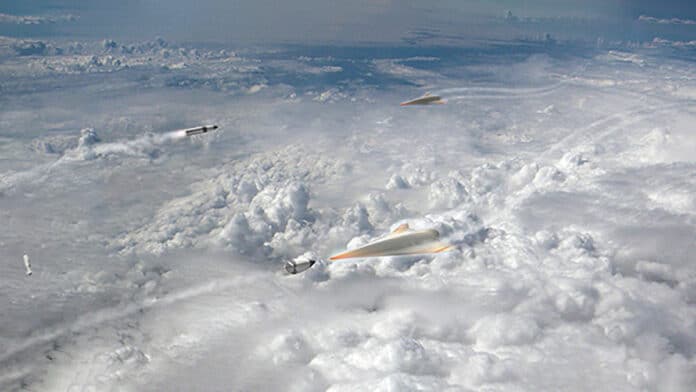Boeing will develop and test technologies for a hypersonic interceptor prototype for the Defense Advanced Research Projects Agency’s (DARPA) Glide Breaker program as part of a four-year effort.
Boeing will perform computational fluid dynamics analysis, wind tunnel testing, and evaluation of aerodynamic jet interaction effects during flight tests. The results will inform future hypersonic interceptor capabilities vital for national defense.
Interceptors are designed to destroy other missiles mid-flight before they reach their targets. Currently in development, the Glide Breaker interceptor is intended to significantly improve missile interceptors as it is specifically designed to target hypersonic glide vehicles. These vehicles are known for their high maneuverability and ability to perform sudden zig-zag maneuvers while gliding unpowered through Earth’s atmosphere at Mach 5 or higher speeds. This combination of speed and maneuverability makes such weapons much harder to defend against than traditional missiles.
“Hypersonic vehicles are among the most dangerous and rapidly evolving threats facing national security,” said Gil Griffin, executive director of Boeing Phantom Works Advanced Weapons. “We’re focusing on the technological understanding needed to further develop our nation’s counter-hypersonic capabilities and defend from future threats.”
Glide Breaker aims to guide the creation and advancement of upcoming hypersonic interceptors that can effectively destroy a target traveling at least five times the speed of sound in the upper atmosphere during its “glide phase” in the upper atmosphere.
Boeing‘s four-year agreement with DARPA involves wind tunnel testing, simulations, and flight testing of a Glide Breaker prototype. The Boeing-led development and testing will provide the foundation for future operational glide-phase interceptors capable of defending against these sophisticated and evolving hypersonic threats.
“This phase of the Glide Breaker program will determine how factors like hypersonic airflow and firing jet thrusters to guide the vehicle affect system performance at extreme speed and altitude in a representative digital environment,” Griffin said in the statement. “We’re operating on the cutting edge of what’s possible in terms of intercepting an extremely fast object in an incredibly dynamic environment.”
